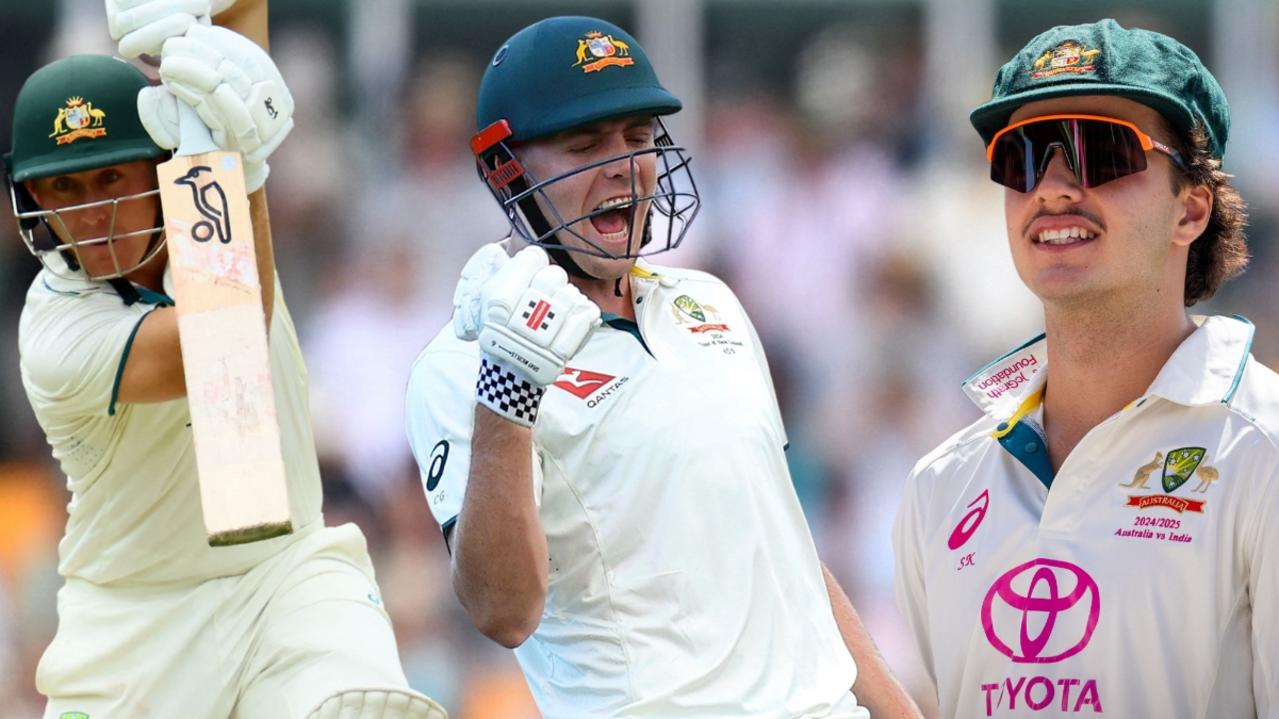11 things we learned from Australia’s stunning ODI series win in India
Australia’s ODI win in India has revived hopes of World Cup success, though questions remain. Including whether the former captain will be picked and how to balance the bowling options.
- Smith: ‘I’ll be fit for World Cup campaign’
- Time running out for Hazlewood’s Cup bid
- Mitchell Marsh opens up on summer from hell
Australia’s sensational 3-2 one-day series victory in India has revived hope of a successful World Cup defence, though questions remain to be answered.
From the Steve Smith and David Warner reintegration, to tough cuts at the selection table and the worrying form of skipper Aaron Finch, coach Justin Langer has many challenges to overcome in the next few months.
Below are 11 things we learned from the series.
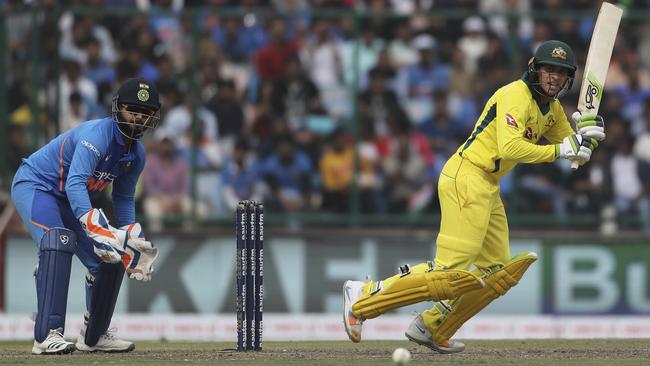
Usman Khawaja showed his ODI class at just the right time
To finish top scorer in a series in which Virat Kohli scored his 40th and 41st ODI century tells you all you need to know about how exceptional Usman Khawaja was across the five matches.
His 383 included two centuries — his first in ODIs — and a 91 in the three winning causes, underlining his value to the side and the certainty he will be in the 11 not just the 15 to face Afghanistan on June 1.
After signing off the home summer with a century in the second Test against Sri Lanka, Khawaja has carried on that form and put behind him a difficult early summer that began with knee surgery and contained off-field distractions.
Fully fit, his brutal elegance offered not just a weight of runs but a reassuring presence at the top of the order, someone for others to bat around.
The only question mark remains over what slot he takes in the side if, as expected, David Warner comes back in to open.
On this evidence, whether he moves down to first drop to reunite Warner and Finch in the opening slots, or retains his current position, Australia have a man able to construct match winning innings, even against the best attacks in the world.
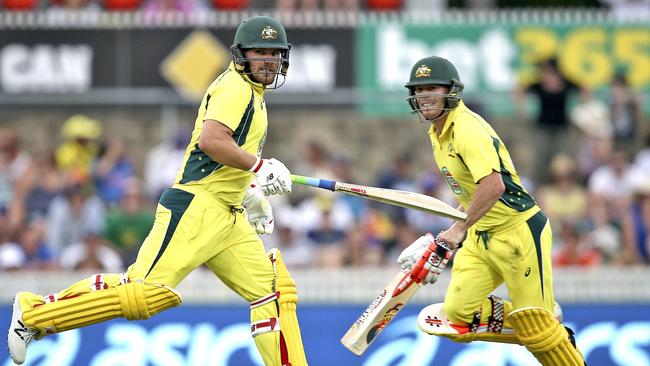
The return of banned duo Steve Smith and David Warner is not straightforward
Prior to this series, and the three wins which came with it, Australia had picked up a pitiful two victories from 11 ODIs — a shocking record which had resulted in a slip to sixth in the world rankings.
The return of heavyweight duo Steve Smith and David Warner couldn’t come quickly enough.
But after a series in which the top order — aside from Aaron Finch — all found their feet and made sizeable contributions, selectors are now in the envious position of viewing Smith and Warner as a welcome option rather than a desperate cure for their ills.
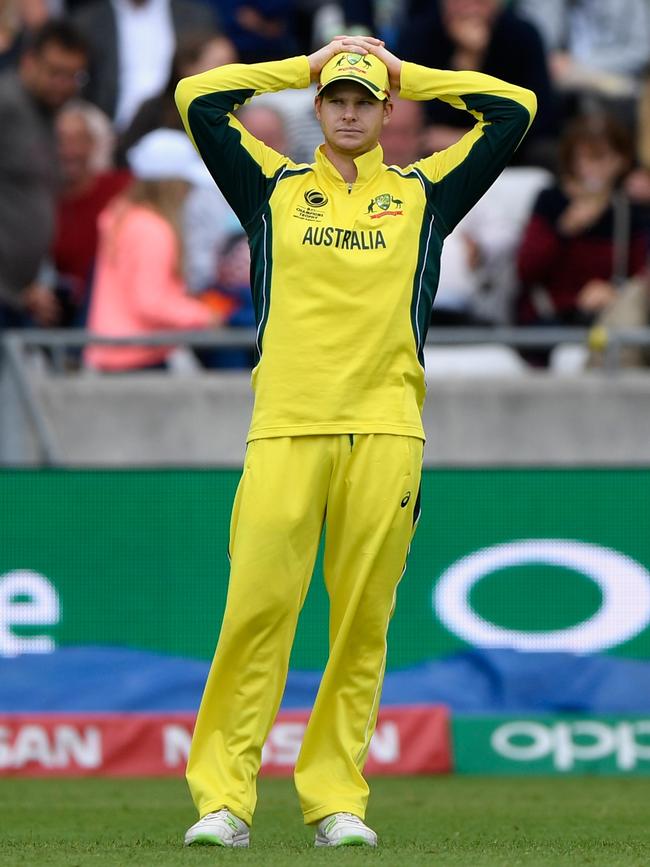
In fact, it’s opened up a debate which no one ever thought would surface … is Steve Smith in Australia’s best XI for the World Cup?
Smith is in the argument for Australia’s best batsman since Bradman — and when the Sandpaper Saga hit like a sledgehammer, he was the undisputed No. 1 Test batsman in the world.
But his ODI form was less glamorous.
From mid-January 2017, Smith averages a modest 27.83 with a mediocre strike rate of 75.9 — with no centuries and a high score of 63 from 14 innings.
They’re hardly numbers that scream ‘pick me’ and if judging from a purely statistical standpoint, there’s no other cricketer in the country who would make the squad with such a record — though Smith’s aura and long-term class is undeniable, and when you add in the ‘chip on his shoulder’ element, he firms as a locked-in prospect.

Ashton Turner offers something that the squad desperately needs
Talk about making an impact at the right time.
With his extraordinary, matchwinning 84 from 43 in just his second ODI, which announced the young Western Australian as the ‘finisher’ Australian cricket has been missing, Turner hasn’t just entered the race for a World Cup spot, he’s flying home like Winx.
Put simply, he fills a need that few other potential squad members can.
The 26-year-old stands 191cm and possesses serious boundary-clearing strength, making him a perfect lower-order powerhouse to complement Australia’s specialist bats.
Of course, he hasn’t booked his ticket yet. But another eye catching innings in the UAE will make it mighty hard to ignore.
LISTEN! The crew dive deep into Australia’s one-day series with India and its implications on the World Cup squad, while Ellyse Perry reflects on her sensational summer.
Winning is a habit. One that Australia had lost. The confidence from this series win will be priceless heading in to the World Cup
The rot had settled in to Australia’s ODI form long before the sport in this country was turned inside out by the Newlands scandal.
Since the last victory, a home series against Pakistan in 2017, the side had suffered six straight series defeats. The self-inflicted loss of Steve Smith and David Warner only served to exacerbate existing problems. But handing a home defeat to one of the favourites for the World Cup will provide an injection of belief in to a side still searching for its identity. That it came from a position of 2-0 down speaks of resilience and character some had thought lost from the national side. If the momentum can be built on in the UAE this series may be looked back on as the moment it all changed for the better.
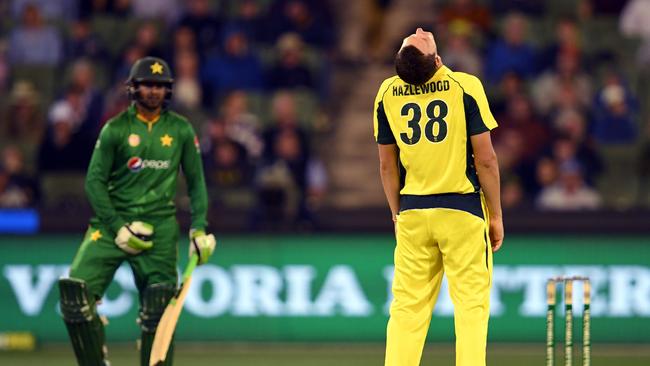
Does this help close the door on Josh Hazlewood?
Josh Hazlewood is one of just two surviving members, along with Mitchell Starc, of Australia’s triumphant bowling attack from the 2015 World Cup final.
But he could easily become a victim of a poorly timed injury, which may put his World Cup plans on ice.
With Hazlewood sidelined with a back injury since January, he’s sat out crucial World Cup preparations and watched as rivals for the fast-bowling spots have mounted strong cases.
The towering quick won’t be available until the last-minute warm-up matches in the UK, and that might leave his run too late.
And while his ODI record of 72 wickets at 25.15 is top shelf — as is his economy rate of 4.73 — the Ashes factor could also come into play here.
While Australia would never want to openly prioritise the Ashes over its World Cup defence, Hazlewood’s importance to the Test team would make it a tempting option to wrap him in cotton wool.
Pat Cummins (14 wickets @ 15.71 against India) and white-ball star Mitchell Starc will be the driving force of the Aussie pace attack. Selectors now have the luxury of leaving Hazlewood out without it causing too much of a commotion.

Finch’s form still an minor issue — but at least the captain’s place in the side is no longer up for debate
When Aaron Finch nicked off for no score in the series opener in Hyderabad he left the field seemingly with a heavy weight bearing down on him. His personal form at a serious low, his place in the side was under serious scrutiny, his respected captaincy providing a better shield to that pressure than the bat was to his stumps of late.
Fast forward two weeks and Finch is the first Australian captain to win an ODI series in India in a decade. That fact alone should make him near bullet proof.
However it should not entirely mask a continued level of indifferent form.
His 93 in Ranchi was a personal circuit breaker of sorts. But was his only serious score across the series and was just his first fifty in 22 limited overs matches to that point. His average over the 11 ODIs played this summer is 21.81 compared to a career mark of 36.37. He now has a series in UAE against Pakistan to play himself in to form, however with some of the pressure rightly eased by the success of his collective.
The wicketkeeper debate is still to be resolved
The looming prospect of Smith and Warner snaring two of the batting spots puts enormous pressure on the likes of Peter Handscomb — who had been favoured as one of the unlucky few to make way.
However, with a breakthrough ODI ton as well as a half century and a 48, Handscomb has emerged as a genuine Cup prospect.

In turn, that has applied the blowtorch to vice-captain and wicketkeeper Alex Carey.
In order to squeeze an extra batsman into the squad, Australia could opt to snub Carey and hand the gloves to Handscomb.
Carey’s form in India was hardly grounds to be dropped — with two unbeaten scores he averaged 34.33 — but his head could cruelly be on the chopping block with the squeeze about to set in.
It’s a risky proposition of course. Imagine a scenario in a World Cup semi-final where a tough chance goes down to give Virat Kohli, Ross Taylor or Quinton de Kock a life?
Australia in a position to spin it to win it
In the past two years — the key build-up of a World Cup cycle — the most prolific wickettaker on England soil in ODIs has been legspinner Adil Rashid (40 @ 23.20) while fellow spinner Moeen Ali (19 wickets @ 37.89) ranks third with Liam Plunkett the fast bowler sandwiched in the middle with 35 wickets.
Whether that is an indication of the type of wickets which will be seen across the UK this winter remains to be seen.
But spin will inevitably be a factor at this year’s World Cup, and Australia has shown in India that they can find balance in an XI with two specialist spinners — and enjoy success.
Adam Zampa is firmly entrenched as the team’s first-choice tweaker, and rightly so.

Despite being rotated out of the squad at times during home summers, Zampa has proven himself to be a star performer with the ability to take key wickets — his dismissal of Virat Kohli in the third ODI was a turning point in the series.
But the rebirth of Nathan Lyon as a white-ball bowler, after playing just 13 games in six and a half years, potentially gives Australia a dangerous one-two punch to work with.
In three games against India, Lyon finished with the best economy rate (4.43) and took a scalp in each clash.
The Test star could prove a difference maker come the business end of the 50-over tournament and suddenly, spin looks like a real strength for Australia.
Australia proved capable of winning different types of matches
In Ranchi Australia faced down a mammoth onslaught from Virat Kohli in the Indian chase, as Adam Zampa proved an effective partnership breaker, before finally ending the Indian captain’s 123 run innings.
In Chandigarh they demonstrated they could join in the current trend of chasing down huge scores, the 359 posted their record ever run chase in fact. A maiden ODI ton from Peter Handscomb and Ashton Turner’s breathless 84 off 43 balls demonstrating it is not just World Cup favourites England who have middle order pyrotechnics to draw upon when needed.
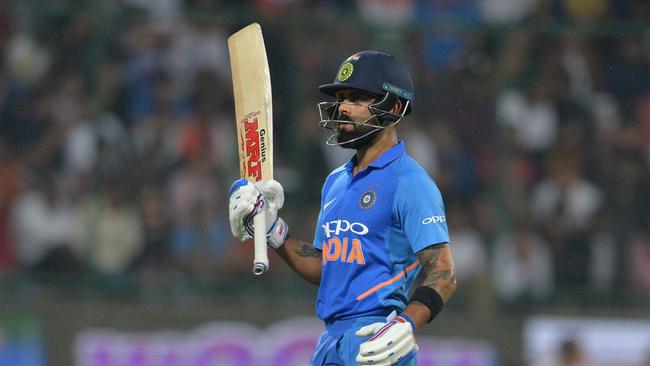
In the decisive match there was a feeling in some quarters that an opportunity to post another 300 score had been lost after being 1-175 at one stage.
The man most responsible for that fine start, however, said the pitch conditions always pointed towards 280 being an eminently defendable total, Usman Khawaja calmly insisting had be needed to go harder he would have done so. That level of match awareness, and the knowledge that Australia can prevail in different types of contests — both high and low scoring by modern standards — will be vital across what will hopefully be an 11 match tournament in England.
Shaun Marsh’s position in the team is suddenly unsure
In the past two years, there’s been no more accomplished ODI batsman for Australia than Shaun Marsh.
The veteran has hit a chart-topping four centuries — equal with skipper Aaron Finch — and notched the third most runs with 669 at 51.46, despite playing half the matches of the two players ahead of him (Finch with 1021 and Marcus Stoinis’s 755).
His strike rate of 95.02 in that period is better than all specialist batsmen bar the explosive Glenn Maxwell (103.85) and Peter Handscomb (97.80).
It would be borderline unfair to dismiss him for the World Cup, but his lean patch in India — with just 29 runs and two single figure scores — is as poorly timed as they come.
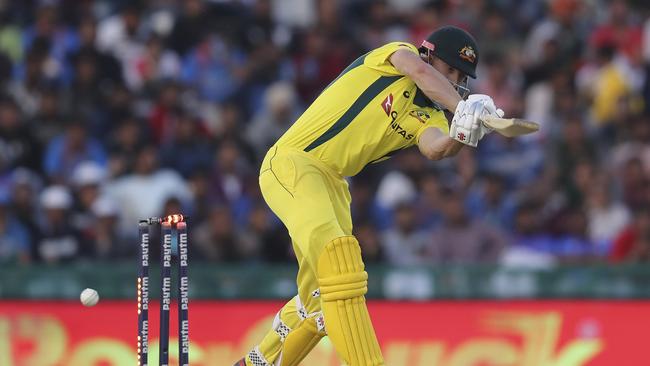
The stunning form of Usman Khawaja, who has thrown his hat in the ring for the anchor-role with a pair of centuries and another score in the 90s, combined with Warner’s imminent return at opener leaves Marsh in grave danger of losing his grip on a spot up the top of the order.
After looking painfully short on batting options since taking over as coach, Justin Langer is now suddenly spoiled for choice.
And after years of being the punching bag for a Test side in a state of flux due to the raft of second, third, fourth and fifth chances offered to him, there would be a cruel irony if Marsh were to miss the World Cup despite having an extremely strong case for inclusion.
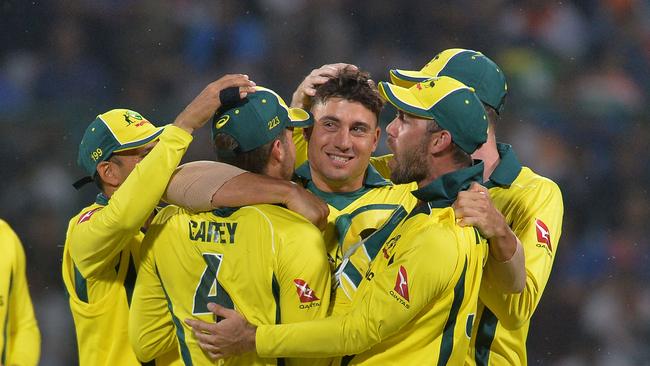
Does this make Australia one of the favourites?
No. But it puts them more firmly in the conversation than at any point in the last two years.
Along with hosts England, India, with their embarrassment of riches in all departments, hold the tag of World Cup favourites. Beating them three times on home soil proves Australia can compete with the best.
It also suggests that the gap between the top ranked sides and those lower down the ICC list may not be as great as it once seemed. The tournament in England will be an open affair, with West Indies holding the English to a draw in their recent series to underline the point. The likes of South Africa, Pakistan and even New Zealand will also take hope from events in both those series.
But with firepower with both bat and ball still to be added to the Australian squad — Mitch Starc absent in India as well as Smith and Warner — there is reason for optimism that the defending world champions can give it a real shake.

